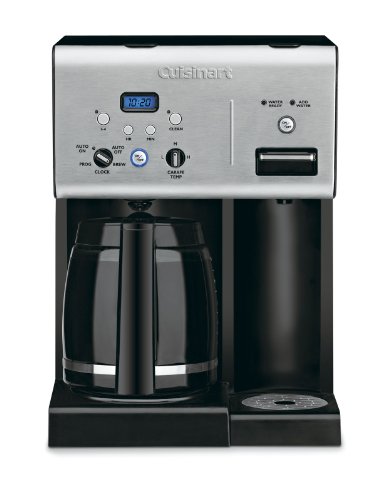Monday, December 19, 2011
Orchard Diary 2010: 5/31/2010 Drip irrigation arrangement (Part 1)
Saturday, December 3, 2011
Amleo.com w/ GardenersEdge.com and the TWK40 Ooze Tube
King Size Canopy Beds Free Shipping Cheep Modus Newport Platform Bed
Monday, November 21, 2011
Drip Irrigation Kit - Mini Jets
Tuesday, November 8, 2011
Off the Grid Farming - Cistern and Irrigation Tricks
Setting up a solar powered, off the grid, irrigation system is a wonderful way to water your garden. Many folks just wait for the rain if they are far from the power lines; but with the right know how and a little hard work you can set up a self sufficient irrigation system.
First of all, make sure to own the land before making this huge improvement. If you do not own land yet, now is a great time to buy. Look into buying tax lien properties, tax foreclosure properties, or using any means you can to get a bargain price. My success in real estate has allowed me the time and money to follow my passion developing an off the grid organic farm.
Start by finding your water source. Is there any moving water like a river or creek? If so, make this your source. Is the water table close to the surface? Try digging a pond. You can usually drive a well as a last resort. The goal is to find a water source which can be used to steadily fill your storage cistern. You can expect to gain .433 psi for every vertical foot that your cistern is elevated above your irrigation lines. If you can only elevate your cistern a few feet, consider low flow drip irrigation lines such as soaker hoses and t-tape.
Make an effort to clean the source water before it enters the cistern. Who wants to climb in and clean that sludgy mess. Also, sediment filled water leaving your cistern will quickly clog your drip lines or emitters.
One way to get the sediment to drop out is to run your intake water through a sealed 55 gallon drum with both the line in and the line out near the top. The plastic screw top type drum works best. The water will flow through the drum and drop a lot of sediment to the bottom. Make sure you have a drain at the bottom to make emptying out the sediment regularly an easy task. You could also create a sand filter by packing a drum with sand first. Put an filter or two in the trunk irrigation line once water exits the cistern on the way towards your field to make sure your irrigation lines stay clean.
Saving Toro Rain Sensor Toro 38587 Free Shipping !8!# Step2 Roller Coaster Purchase
Tuesday, November 1, 2011
Monday, October 17, 2011
Cuisinart CHW-12 Coffee Plus 12-Cup Programmable Coffeemaker with Hot Water System, Black/Stainless
!±8± Cuisinart CHW-12 Coffee Plus 12-Cup Programmable Coffeemaker with Hot Water System, Black/Stainless
Fresh, delicious coffee is only the beginning! This incredible 2-in-1 hot beverage center brews great coffee plus delivers press-to-dispense hot water for tea, hot cocoa, instant soup and more. It’s fully automatic with all your favorite features, like programmable auto-on and auto- off settings, carafe temperature control, Brew Pause, 1-4 cup option, and self clean. The blue backlit LCD with digital clock is elegant and easy to read. Convenient indicators lights let you know when water is hot and ready to dispense and when it's time to refill. With independent operation the coffeemaker and hot water system can be used together or separately.
!8!# Powertec Fitness Best Quality !8!# Browning Safes Buy Now
Tuesday, October 11, 2011
Tuesday, October 4, 2011
Wednesday, September 28, 2011
Orbit Watermaster 91922 Twelve-Station Sprinkler System Timer with Remote Control
!±8± Orbit Watermaster 91922 Twelve-Station Sprinkler System Timer with Remote Control
ST2RF the latest in Orbit Irrigation Products "Signature Series" Irrigation Controllers is truly in a class of its own. Multilingual LCD read-out, hand held manual on/off transmitter from up to 300' offers unsurpassed levels of convenience and simplicity. Bonus feature: The controller has a built in wireless rain sensor receiver, no wiring needed!
- Orbit 57069 Sprinkler System Hard Wired Rain and Freeze Sensor
- Orbit 57095 Sprinkler System Weather-Resistant Outdoor-Mounted Control Timer Box Cover
- Orbit Sprinkler System Rain And Freeze Sensor 57071
- Orbit 57100 3/4-Inch Female Pipe Threaded Auto Inline Sprinkler Valve
- Orbit Watermaster 91926 6-Station Sprinkler System Timer with Remote Control
Wednesday, September 21, 2011
Friday, September 16, 2011
Friday, September 9, 2011
Friday, September 2, 2011
Sunday, August 28, 2011
Tuesday, August 23, 2011
Saturday, August 13, 2011
Wednesday, August 10, 2011
Monday, August 8, 2011
Shrub and Rose Drip Irrigation Kit Model K001
!±8± Shrub and Rose Drip Irrigation Kit Model K001
###############################################################################################################################################################################################################################################################
Golf Rangefinders Comparison Purchase !8!# Order Remote Dog Collar Training
Thursday, August 4, 2011
Tuesday, August 2, 2011
Saturday, July 30, 2011
Friday, July 29, 2011
Wednesday, July 27, 2011
Sunday, July 24, 2011
Rain Bird SST-600I Simple Set 6-Station Indoor Automatic Sprinkler System Timer
!±8± Rain Bird SST-600I Simple Set 6-Station Indoor Automatic Sprinkler System Timer
Zone based set up. All options shown at once in plain English. Superior surge protection. Sealed from the environment. Valve fault protection. Impact resistant transformer. Easy to use and durable. No. SST 600I: 6 station No. SST 900I: 9 station
- Rain Bird RSD Rain Sensors
- Rain Bird 3/4-Inch Sprinkler System Automatic In-Line Valve CP075
- Rain Bird 4-Inch 25 to 50-Foot Coverage Radius Premium Stainless Steel Pop-Up Rotor Sprinkler Head 52SA
- Toro 53769 Sprinkler System Wired Rain Sensor
- Rain Bird 3/4-Inch Professional Grade Sprinkler System Anti-Siphon Valve DAS075/ASVF







